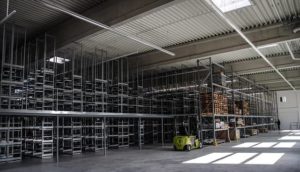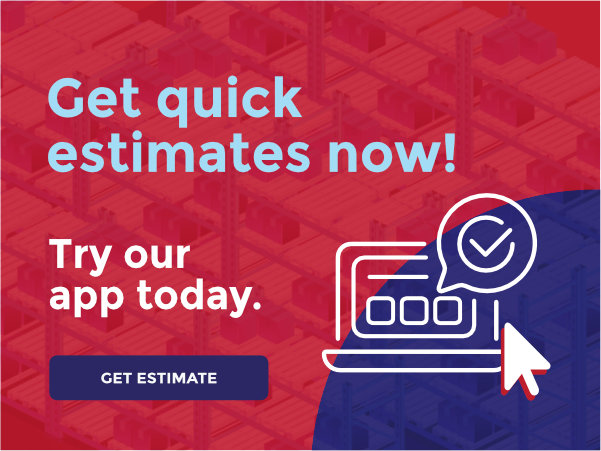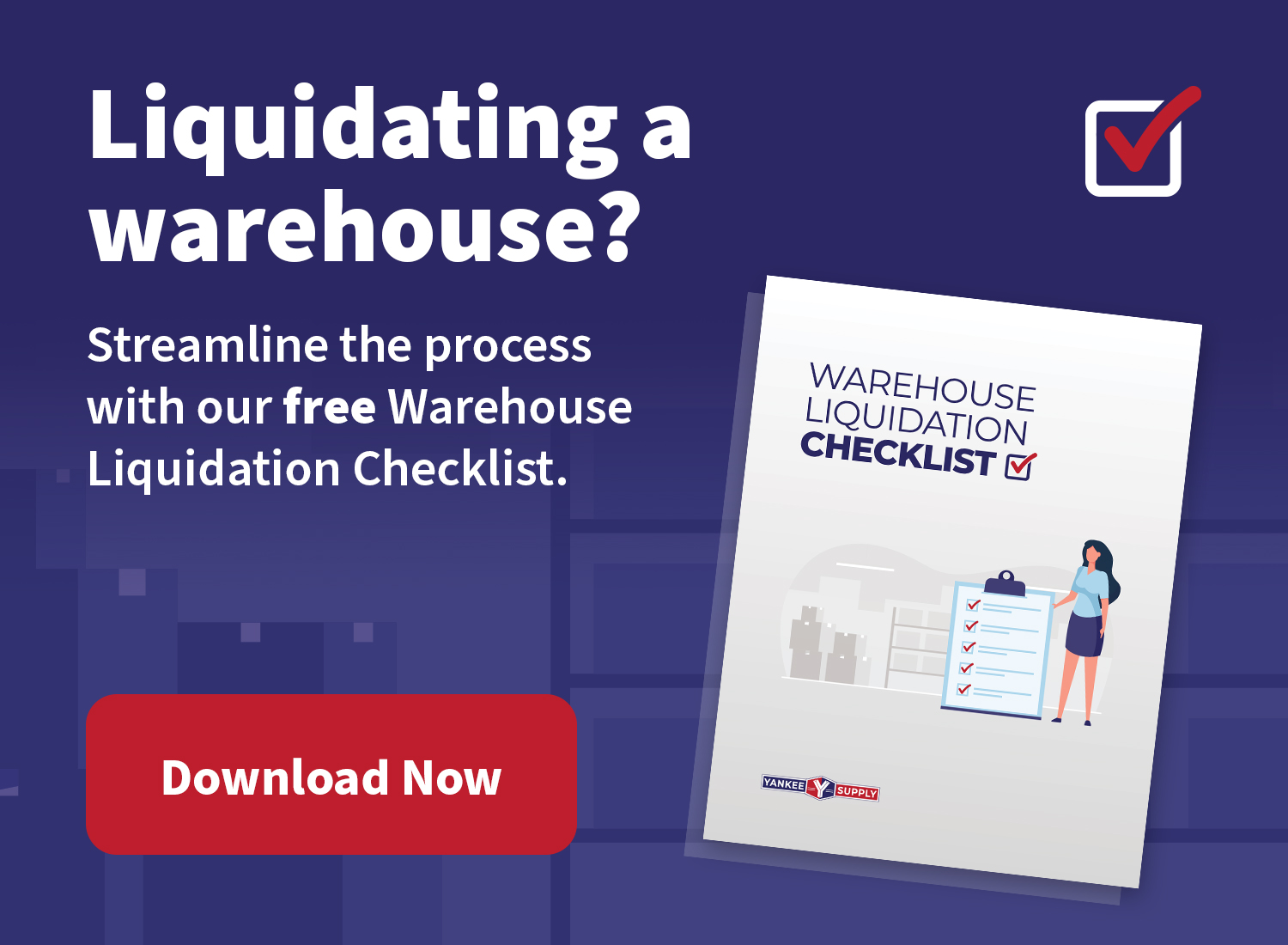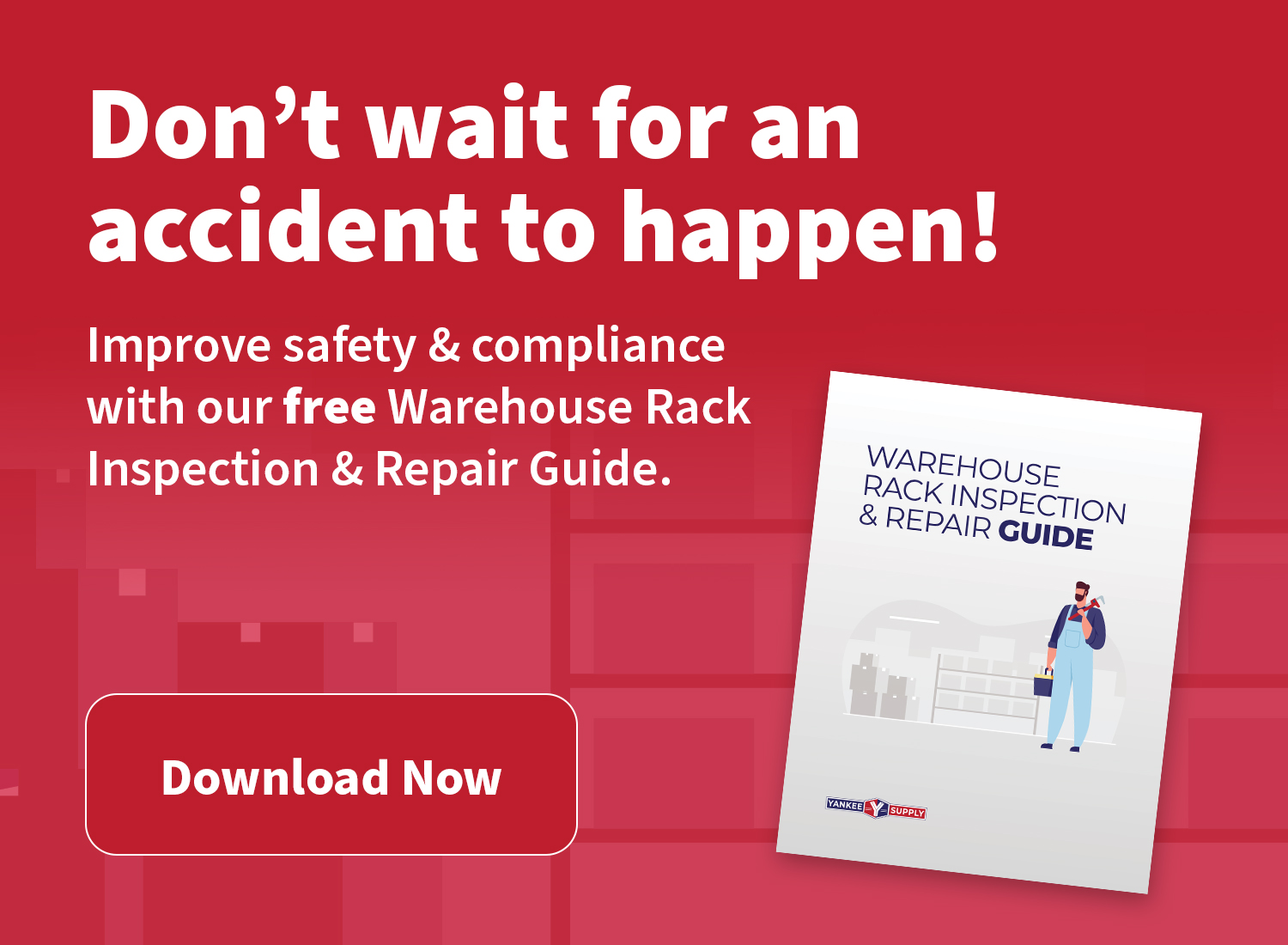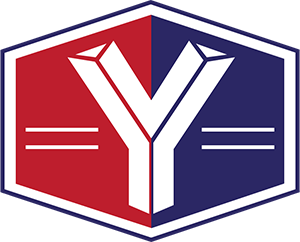Implementing a racking system inside your warehouse is a surefire way of improving storage efficiency. It lets storage owners maximize the space of their storage through a well-organized system of racking. Here, we will be talking about Drive-Through racking and how it can significantly help your warehouse storage. In addition, we will also be talking about Drive-In racking and how it falls in comparison to Drive-Through racking.
What is Drive-Through Racking?
A drive-through rack is a pallet racking system typically composed of four posts that support beams at two different levels perpendicular to the aisle space between them. Drive lanes running through the center of this type of configuration allow forklift trucks to drive up or down the rack, saving time and increasing storage efficiency by allowing material flow whether or not there is a forklift truck present. In addition, by having drive lanes on every level instead of just some levels, drive-through racks maximize storage capacity while keeping drive lanes fully accessible for drive up/drive down.
Describing Drive-In Racking
A drive-in rack is a two or four-post racking system that allows the front-end loader of a forklift truck to drive in and drive out. These racks have drive lanes from which pallets can easily be removed from any level with no need to drive up ramps, press buttons for drive belts, climb stairs, swing load beams, or move pans. This type of configuration makes it easy for forklift trucks to drive in and drive out, increasing storage efficiency and reducing time spent moving pallets from aisle space.
What are the benefits of drive-through racking?
Drive-through pallet racks have several distinct advantages over drive-in drive-out racking systems, including:
A higher utilization rate makes drive-through racks more efficient than drive-in drive-out racks by reducing wasted space. Even with larger trucks, an operator can hit three lanes off one aisle, which means pallets are not moved up or down multiple rows when loaded or unloaded. This results in greater picking productivity when combined with efficient material handling equipment that ensures efficient moves and creates minimal travel time.
The drive aisle is only occupied when pallets are loaded or unloaded, allowing drive-through racks to be more productive than drive-in drive-out racks because the drive aisle is not constantly congested with pallet movement, and the line of sight is clear.
Compared to drive-through racking, drive-in drive-out racking requires a more significant number of levels for storage. It has a less efficient layout that limits utilization and exposes goods to weather damage. This means it’s easier to overload drive-in drive-out systems, resulting in higher labor costs and equipment damage due to weight limitations.
Driving forklifts in drive-through racking means fewer trucks are present indoors at any given time, which reduces the likelihood of accidents. This minimizes traffic jams and lowers the risk of collisions. In addition, if drive lanes are being used as drive aisles, trucks become unnecessary on every storage level. Maximizing your warehouse square footage with minimal equipment is needed while improving material flow whether or not there is a forklift truck present.
Drive-in drive-out systems require more aisle space than drive-through racks because vehicles need additional space to drive in and drive out while lining up to enter and leave racks. On the other hand, drive-through pallet racks give you the ability to maximize your storage density while minimizing rack depth since vehicles can drive on either side of the drive aisle, allowing for more efficient material handling equipment.
Suppose drive-in drive-out racks are designed without drive lanes. In that case, they must have drive aisles that are two lanes wide compared to the drive-through system’s one-lane configuration, resulting in lower storage density since there is less space for pallets on each level due to the necessary aisle width.
Drive-in drive-out systems make your warehouse more vulnerable to traffic jams and collisions because rack access is on both sides of the aisle. This exposes goods to damage from forklift traffic or someone backing into them.
Compared with drive-through racking, drive-in drive-out systems don’t have chute doors–so inventoried materials are vulnerable to weather damage.
Since drive-in drive-out systems don’t have drive lanes, they require multiple rows of storage on the same rack level and additional drive aisles within the system. This means drive-in drive-out racks may be challenging to load and unload and increase the risk for collisions.
When you need pallet racking that provides efficiency while minimizing square footage dedicated to equipment, drive-through racking is your best bet. Its configuration allows material flow without the need for forklift trucks on every individual level, improving productivity by maximizing your warehouse square footage with minimal equipment needed to do so while simplifying material handling through one aisle that works in both directions.
What are the disadvantages of drive-through racking?
While drive-through racking can make warehouse operations more efficient, it does have some notable drawbacks.
Drive-in drive-out racks may be better suited for short-term storage. They are easy to load and unload quickly with forklifts, making them good for production orders that need to be moved frequently on a short cycle. However, drive-up drive-down drive lanes don’t work as well for long-term storage because you can’t stack goods past the roofline or over the drive aisle, limiting how high you can store product.
Because of its size, drive-through racking requires at least 30 feet of road width to accommodate three lanes of pallets off one aisle. A five-row drive-through rack requires a drive aisle 60 feet wide.
In drive-in drive-out racking, drive lanes generally have a single drive lane shared with the adjacent aisle, which creates slowdowns when forklifts exit and enter. In drive-through systems, all three rows of pallets can be driven from one aisle, which means more efficient use of space.
Drive-Through Racks Are More Expensive Than Drive-In Systems:
The cost for a drive-through system varies depending on the size of equipment you need to handle your warehouse operations. Drive-in drive-out racks are usually less expensive than drive-through systems because they don’t require much room to effectively operate or store your inventory.
Drive-in drive-out drive lanes are typically less expensive than drive-through drive lanes because drive-in drive-out lanes can be built with a shared aisle. The drive aisle is dedicated to each lane in drive-through systems, which requires more space and floor load-bearing capacity.
In order to calculate costs for both systems, you’ll need to know your total pallet count per month. Drive-through racks require a higher monthly volume of pallets to maintain an efficient storage system. You’ll also have to consider whether or not you need access to the back of your warehouse, where the chute entrance/exits could be located behind equipment or other barriers that may cause problems when moving heavy material into or out of drive-in drive-out racks.
In drive-in drive-out racking, the pallets are constantly stacked against one another, which can cause significant damage to goods from exposure to weather elements and forklift traffic always driving into them. However, in drive-through drive lanes, goods are faced away from each other, and goods that would be damaged by forklifts or exposure to weather elements can be stored on lower levels where they won’t receive the same degree of exposure.
The process for loading and unloading is much more efficient in drive-through systems than drive-in-drive-out systems because all three rows of pallets can be driven up at once without having to exit and enter a single lane multiple times. This cuts the time it takes to move pallets into and out of drive-in drive-out racks.
In drive-through systems, all three rows of pallets can be driven from one aisle – instead of having a dedicated drive lane per row as with drive-in drive-out racking. This means you can use more of your floor space for storage, and drive lanes don’t have to travel as far, making the process more efficient.
In drive-in drive-out systems, goods are stacked against one another which can cause substantial damage when exposed to weather elements or forklift traffic because they will constantly be hit by other pallets while being handled by forklifts. On the other hand, in drive-through systems, goods are faced away from each other – protecting them from weather elements and forklift traffic. This means driving through drive lanes can be used to store goods that are significantly damaged by exposure or forklift traffic, while drive-in drive-out drive lanes are typically reserved for pallets that aren’t as severely affected by exposure or forklift damage.
What Are The Benefits Of Drive-In And Drive-Through Racking Systems?
So far, the discussion has been about the difference between Drive-Through and Drive-in Drive-out racking. Now, we will shift the discussion on what will be the benefits if both are applied inside your factory:
The benefits of the drive-in and drive-through systems are numerous:
– drive-up/drive-down makes it easier to remove pallets from any level
– drive-lanes allow forklift drivers to drive in and drive out, saving time
– these drive-in and drive-through drive lanes can be used as aisles
– drive-in and drive-through drive lanes allow the use of reach trucks for improved storage density
– drive-in and drive-through racks can store goods that are more severely damaged by exposure or forklift traffic, high up from floor level where they won’t receive the same degree of exposure.
The process for loading and unloading is much more efficient because all three rows of pallets can be driven up at once without having to exit and enter a single lane multiple times. This cuts the time it takes to move pallets into and out of drive-in drive-out racks. Drive-through systems also have faster processing times since all three rows of drive lanes are drive-through drive lanes, allowing forklift drivers to drive up and drive down – rather than having to drive into one lane to unload, then drive out of that lane and drive into another lane. The process for loading and unloading is much more efficient because all three rows of pallets can be driven up at once without having to exit a single drive aisle multiple times. This cuts the time it takes to load and unload pallets with drive-in drive-out racks.
Drive-In And Drive Through Racking Systems Make A Warehouse More Efficient Than Traditional Storage Methods:
In addition to all the above benefits, drive-in and drive-through racking systems make a warehouse more efficient than traditional storage methods. By allowing for drive up/drive down, drive lanes can be used as drive aisles or chute entrances/exits to increase storage density and improve material flow whether or not there is a forklift truck present.
When drive lanes are not being used as drive aisles, they can still serve as chute entrances/exits allowing material flow whether or not a forklift is present. This type of configuration allows material flow without the need for forklift trucks on every individual level, increasing storage efficiency by maximizing your warehouse square footage with minimal equipment needed to do so.
All of these benefits help you save time and money, increasing storage efficiency by maximizing your warehouse square footage with minimal equipment needed to do so.
Conclusion:
A Drive-In And Drive-Through Racking Systems Make A Warehouse More Efficient Than Traditional Storage Methods. Drive-up/drive-down makes it easier to remove pallets from any level drive lanes since it allows forklift drivers to drive in and drive out, thus saving a lot of time. Drive-in drive-through drive lanes can be used as aisles.
The process for loading and unloading is much more efficient because all three rows of drive lanes drive drive drive at once without having to exit a single drive aisle multiple times. This cuts the time it takes to load and unload pallets with drive-in drive-out racks. Drive lanes can also serve as chute entrances/exits allowing material flow whether or not a forklift is present. This type of configuration allows material flow without the need for forklift trucks on every individual level, increasing storage efficiency by maximizing your warehouse square footage with minimal equipment needed to do so.

